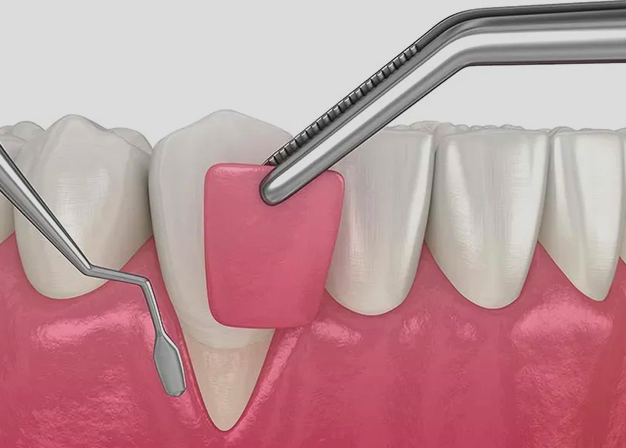
Understanding Periodontal Disease
In health, your gums should be snugly attached to your teeth. When you have periodontal disease, this supporting gum tissue gets inflamed and the underlying bone starts getting destroyed, forming “pockets” around the teeth.
Over time, these pockets become deeper, providing a larger space for bacteria to live accumulate and advance under the gum tissue. If left untreated, these pockets can continue to cause further bone loss and gum inflammation leading to even more deeper pockets. Eventually, if too much bone is lost, the teeth will need to be extracted.
During the surgery, your surgeon opens up the gum tissues to get direct access to the root surfaces of the teeth and removes the disease-causing bacterial plaque and calculus, smoothens the irregular surfaces of the damaged bone, before closing back the gums. This allows the gum tissue to better reattach to healthy bone and consequently reduce the pocket depths.
Sometimes your surgeon may recommend a regenerative procedure when the bone supporting your teeth has been destroyed due to periodontal disease in an attempt can reverse some of the damage by regenerating lost bone and tissue. During this procedure, your surgeon opens the gum tissue and removes the disease-causing bacteria. Membranes, bone grafts or tissue-stimulating proteins can be used to encourage your body’s natural ability to regenerate bone and tissue.
Maintenance is important
It is crucial to maintain a regular home care routine to prevent the progression of gum disease. Bacteria quickly multiply and adhere to the teeth shortly after thorough cleaning. If left untouched for 24 hours, plaque hardens and becomes mineralized. To prevent bacteria from penetrating deeper into the foundation of your teeth, it is necessary to provide extra care for deeper gum pockets.
Having a specific maintenance schedule with us is highly important, especially for accessing the most difficult areas of your previously affected gum pockets that may be challenging to clean at home. We can customize your plan to include 2, 3, or 4 visits per year, depending on the severity of the disease and its response to treatment and home care.
